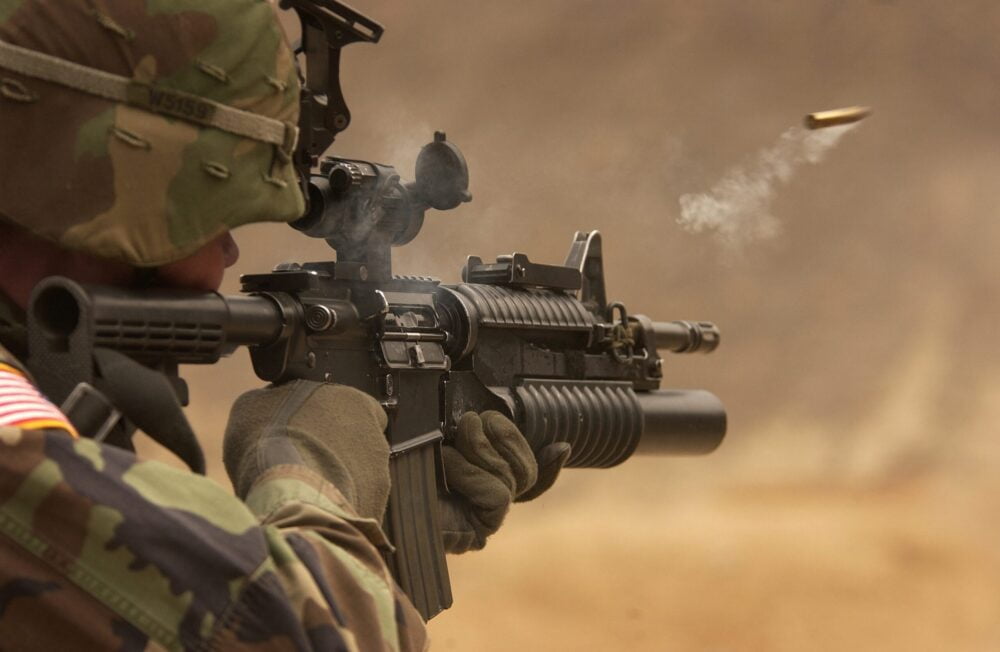The Russian company Kalashnikov began to develop the Ak-12 in 2011. As the online newspaper Sputniknews indicates, that same year the developers built the first prototype of the weapon. A year later, the public was finally able to observe the final product. This new assault rifle has undergone great changes and variations over the years.
The intention of these modernizations: to comply with the Russian armed forces, a regulation that establishes various levels of quality that new weapons must-have. In 2017, the assault rifle met all the requirements, and it was immediately recommended for military service. A year later, the Russian Army received the first batch of this assault rifle, thus beginning the mass production of this new weapon. By 2019, Russian soldiers had already received more than 4,000 Ak.12 units.
More changes
At the end of last August, Kalashnikov presented a new modernization in the weapon. This improvement was introduced in the Army 2020 international military-technical forum. The military agents that had already used the weapon nurtured these improvements, which include; novelties in design changes to better adapt to each individual and making easier the maintenance of the Ak-12.
“In the near future, the troops will receive the new version of the AK-12 assault rifles. The improvement of any new model of firearms is for any manufacturer a continuous process, which usually takes years,” commented Dmitri Tarasov, director General Kalashnikov, as reported in Sputniknews.
The Ak-12 pierces body armor
As seen in an informative video from El Mundo, the bullet from one of these rifles can pierce through body armor. This video was a test to test the strength of the vest as well as the strength of the rifle. To conduct the test, the developer employed American body armor and a 7.62 calibre bullet.
Inspector Grigory Lycenko carried out the experiment a weapons test field belonging to Kalashnikov.
In the video, the bullet hits the vest, and in addition to causing serious damage, it goes through the panel, generating a small internal explosion in the vest material.
The instructor repeated the operation once more, with the same result: a leaky body armor.
“The 7.62 calibre is so strong that the images show how the muzzle jumps slightly and bends after firing,” highlights one of the local media that covered the news, calling the experiment a “fascinating spectacle.”
What does this mean for body armor?
As Sputniknewsout points out:
“The AK-12 represents the beginning of a new generation of automatic weapons from the Kalashnikov brand. The assault rifle will serve as the basis for a series of weapons of various calibres for civilian and military use that the company plans to launch in the future.”
But, what does current legislation mean for the body armor and shovel industry? Will the body armor industry have to find a solution to become resistant to this new rifle?









Message: I am a product developer with a new solution for the bulletproof vest industry and I would like to share it with you for your professional opinion.
Idea: A waistcoat that is to be worn under bulletproof vests with the ability to detect penetrative direct hits. On detection reporting of location through the in-built GPS system once penetration of bulletproof vest detected to backup and medics.
Reasoning: Increasingly criminals and terrorists are using armour piercing bullets. In some parts of the World these type of bullets are known as cop killers as many officers have lost their lives.
Please let me know if it is a worthwhile pursuit.
This is little more than a Russian puff piece. Don’t get me wrong, the AK-12 looks like a really cool rifle but the ammo it fires is the same as the AK-74 and it is the bullet that penetrates armor, not the rifle. The AK-12 is chambered in 5.45x39mm (domestic) and 7.62x39mm (export) and has simply lacks the velocity or bullet construction to penetrate current US Military body armor plates ESAPI Rev G (2013) or Rev J (2018). Those plates are rated to stop larger, faster and tougher threats:
3 shots of 147-grain (9.5 g) 7.62×51mm M80 ball 2,750 ft/s (840 m/s)
3 shots of 147-grain (9.5 g) 7.62×54mmR LPS steel-core FMJ 2,750 ft/s (840 m/s)
3 shots of 62-grain (4.0 g) 5.56×45mm M855 3,250 ft/s (990 m/s)
3 shots of 166-grain (10.8 g) .30-06 M2 AP 2,850 ft/s (870 m/s)
3 shots of 151-grain (9.8 g) 7.62×54mmR 7N1 “Sniper” steel-core2,700 ft/s (820 m/s)
3 shots of 55-grain (3.6 g) 5.56×45mm M995 AP (Tungsten) 3,350 ft/s (1,020 m/s)
Also note that the latest version of XSAPI (currently in war stockpiles) is rated to stop all of the above threats and:
6 shots of 114-grain (7.4 g) 7.62×39mm 57-BZ-231 (BZ API) 2,400 ft/s (730 m/s)
3 shots of 129-grain (8.4 g) 7.62×51mm M993 AP (Tungsten) 3,050 ft/s (930 m/s)
Reference:
https://en.wikipedia.org/wiki/List_of_body_armor_performance_standards
https://ciehub.info/spec/PD/FQ-PD-07-03D.pdf
I hope this helps clarify things.